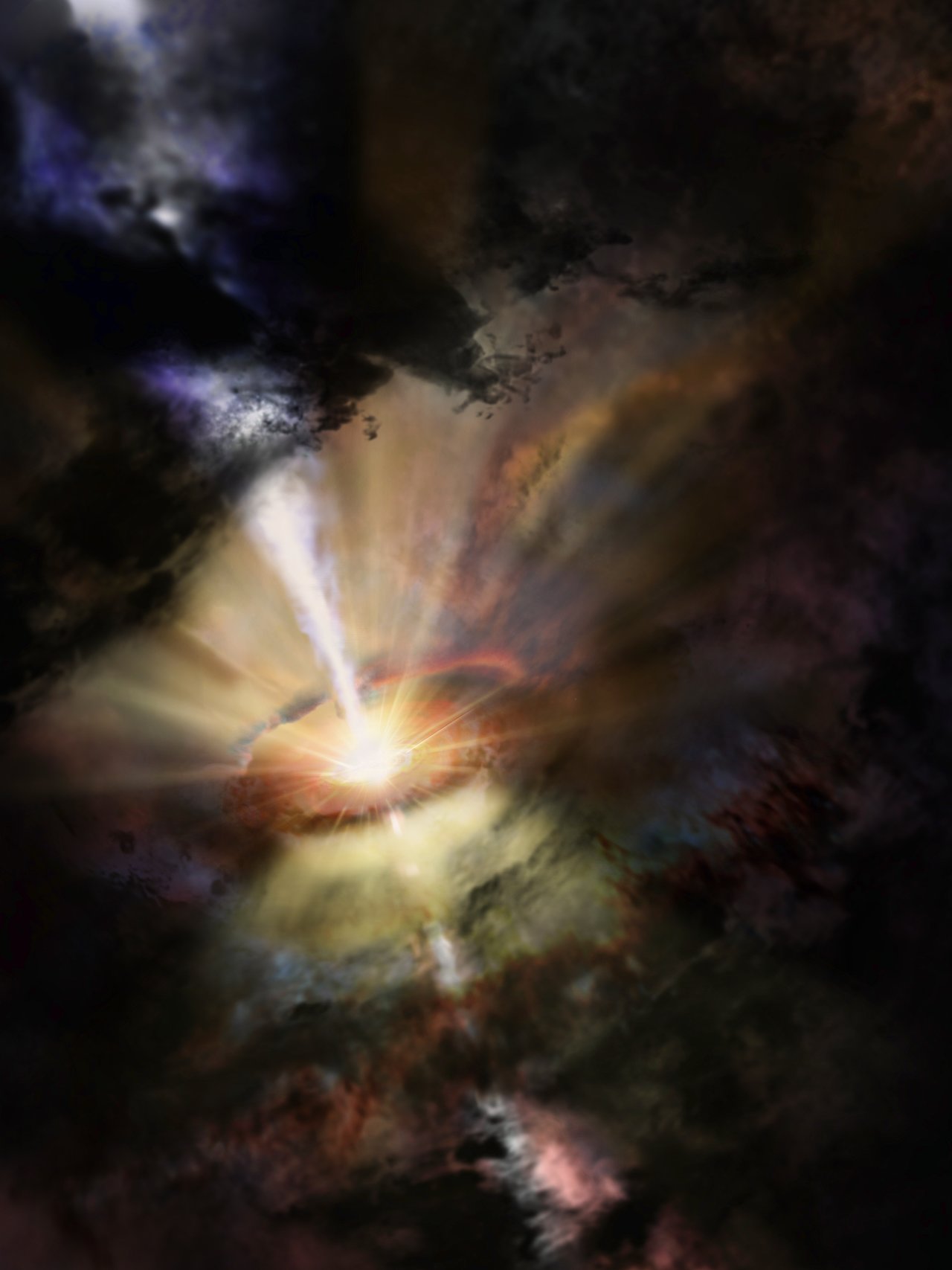
Astronomers know that supermassive black holes that live in the centre of massive galaxies are fed by hot ionized gas from the galaxy’s halo. Recent observations reveal that chaotic, cold rain is also included in their diet.
Scientists used the Atacama Large Millimeter/submillimeter Array (ALMA) to observe three intergalactic gas clouds careening toward a supermassive black hole at about a million kilometers per hour. Each cloud contains as much material as a million Suns and is tens of light years across. The galaxy that hosts the black hole is known as Abell 2597 and is one billion light years away from Earth.
“This is one of the first unambiguous pieces of observational evidence for a chaotic, cold rain feeding a supermassive black hole. This very hot gas can quickly cool, condense, and precipitate in much the same way that warm, humid air in Earth’s atmosphere can spawn rain cloud and precipitation”, astronomer Grant Tremblay, lead author of the relevant publication, said.
Although ALMA detected only three clouds of cold gas in the vicinity of the black hole, scientists speculate that there may be thousands like them. Astronomers now plan to use ALMA to determine whether other supermassive black holes are fed in a similar way.
Publication: Tremblay et al. 2016
Source: ESO
